Of the many ways to cheat at trading card games, none are as powerful as stacking the deck. At their core, TCGs are about playing the odds. “What are my chances to brick my opener?” “What resource curve will most consistently let me play every turn?” “Does my top deck win?” Stacking the deck mitigates this uncertainty. In games all about statistics and hidden variables, stacking your deck lets you play with perfect information.
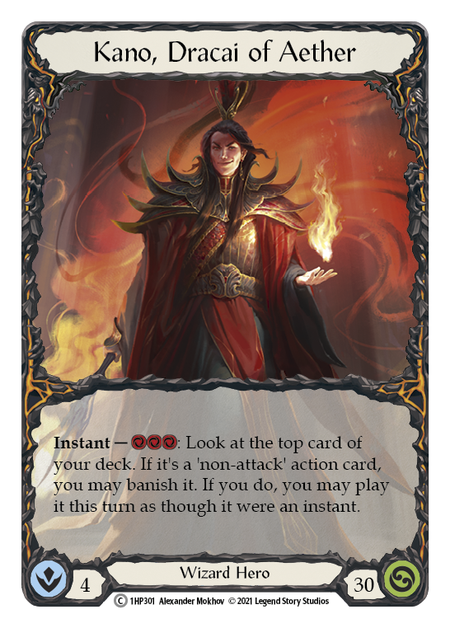
No hero relies more on this kind of probability than Kano, Dracai of Aether. Kano’s ability lets you, at any time, pitch three resources to look at the top card of your deck. If it’s a “non-attack” action card (NAA), you can banish it and play it that turn as if it were an instant. Kano’s hero power influences everything about his deck building, from pitch ratios to card selection. Unlike Iyslander, Stormbind - the other wizard currently legal in Classic Constructed - Kano doesn’t play attack action cards because they can brick the top of his deck. Despite Kano’s love of playing at instant speed, instant cards like Aetherize are often unplayable for the same reason, even with their seemingly useful ability to counter hate cards like Oasis Respite. Kano loves the opt keyword; cards like Eye of Ophidia, Gaze the Ages, and Aether Spindle are mainstays of Kano builds for a reason: they let you play with perfect information.
Flesh and Blood is unique in how it handles your deck and resources. Shuffle effects are few and far between. Therefore, when you pitch cards to the bottom to pay for costs, you’re going to see those cards again, and you’ll see them in the exact order you put them there. This mechanic is something that new players will likely overlook. For a number of heroes however, like Dromai, Iyslander, Oldhim, Bravo, and Arakni, pitch stacking is an integral skill to enable their late game win conditions. Kano is another one of these heroes, and this weird quirk of the game will let us solve his biggest issue. Let’s learn how to pitch stack.
1. Seeing Your Second Cycle
For most heroes, pitch stacking boils down to pitching good hands in the early game so that you can play them back-to-back come late game. While Kano can certainly pitch hands like four blues followed by a red to enable good flips from his hero power, these kinds of quality hands aren’t the hands he wants to play. Arcane damage is much less efficient than physical damage; however, it is much more scalable, especially when you take into account cards like Aether Wildfire and Kano’s specialization card, Blazing Aether.
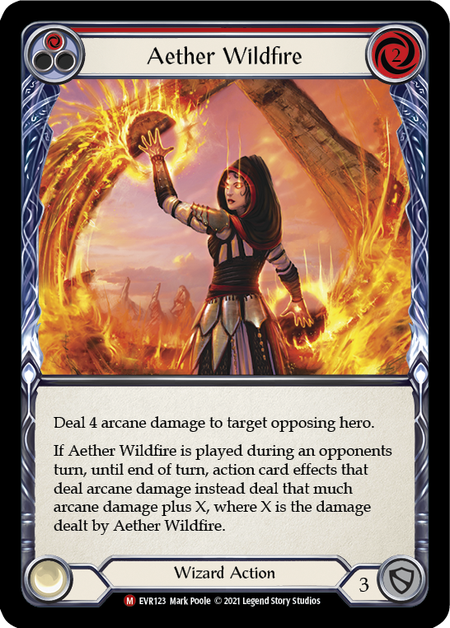
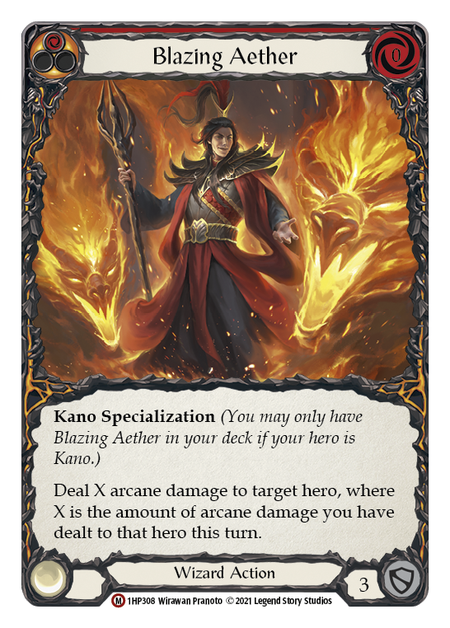
When pitch stacking in Kano, the aim is to order the bottom of your deck and present an overwhelming combo once the second cycle is reached, ending the game instantly through whatever defenses the opponent has. This requires a good memory; more precisely, it requires Kano to know exactly when that second cycle combo arrives, since drawing into combo pieces often means he can’t play them. Therefore, the first thing to master on your journey will be recognizing your second cycle.
The easiest method is to remember the very first cards you pitch each game. This method works especially well when pitching singleton cards like Eye of Ophidia. When you see that card for a second time, you’ll know you’re in the second cycle. From there, it’s just a matter of remembering how far down your combo is.
For reasons I’ll discuss later, I don’t use this method much anymore, but it’s nonetheless still useful to learn, and a good starting point.
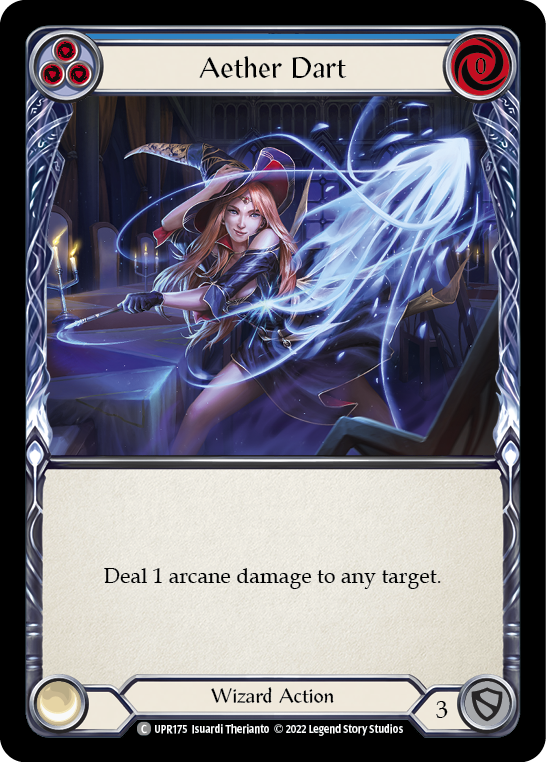
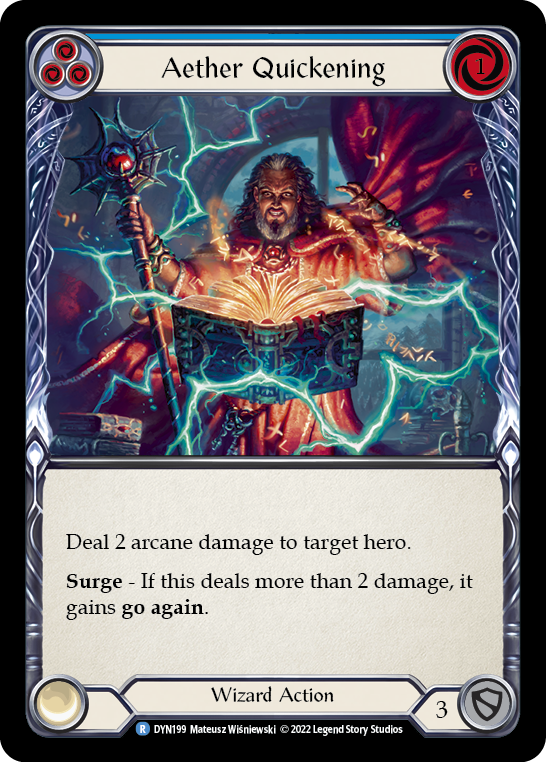
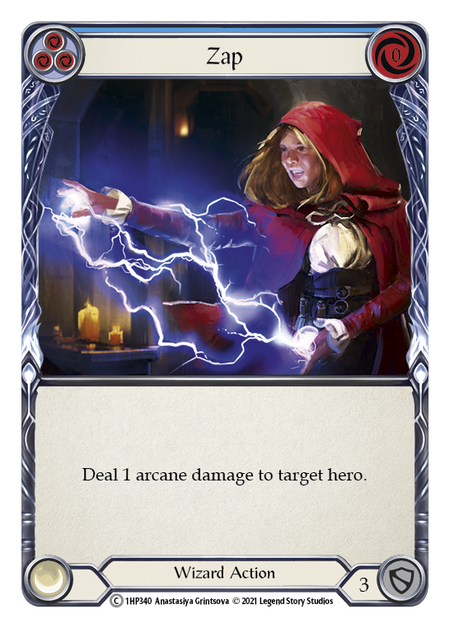
At the start of the game, pitch either singleton cards; two copies of the same card like two Aether Flare blue pitched together; or a specific order of different cards, like Aether Dart blue, Zap blue, and Aether Quickening blue to create a marker sequence in your deck. Blues are the best marker cards, since you’ll need them for resources on your combo turn. Around 4-6 blues is usually a good number to pitch - and be sure to remember how many you clustered together. This shouldn’t take very long to master, two to five games at most, and once you’ve got this down pat you’re ready for the hard part.
2. The Hard Part
Now that you can recognize your second cycle, it’s time to build your combo. At the start of the game, pitch a sequence of marker cards to denote your second cycle. Then, pitch combo pieces to the bottom. In current builds, the best cards to stack are, in no particular order: Aether Wildfire, Blazing Aether, Gaze the Ages, Tome of Fyendal, Tome of Aetherwind, Aether Spindle (red), Chain Lightning, Sonic Boom, Lesson in Lava. You’ll notice that these cards are primarily your good red and yellow damage cards (with the exception of Gaze the Ages and both Tomes).
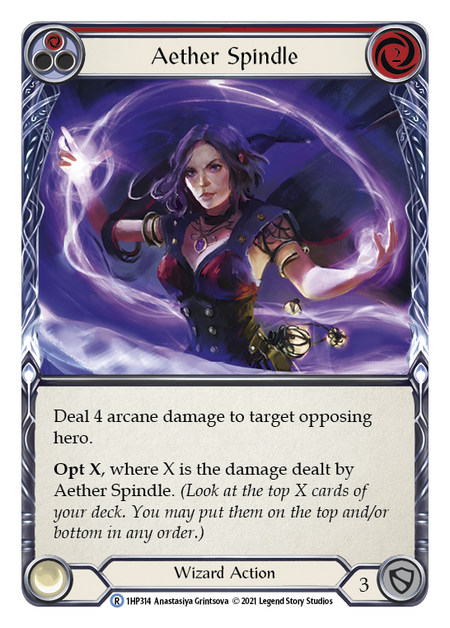

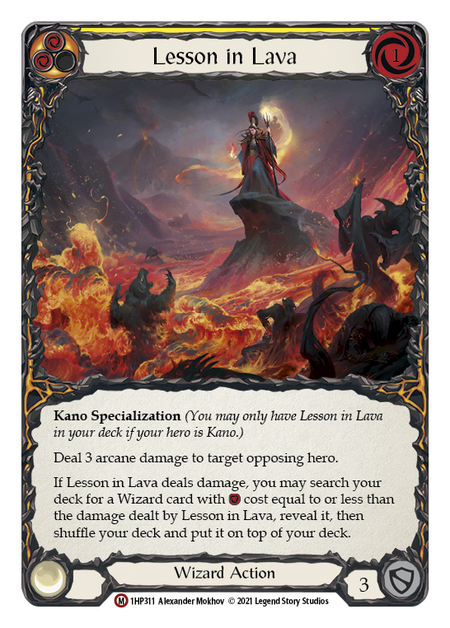
It pays to have a mnemonic trick to reduce the load on your brain when remembering the cards in your pitch stack. Personally, I think of blue cards as numbers, and each important piece gets a one word name to remember it by. (It’s okay if this particular method doesn’t work for you, as I’ll cover a different method at the end of the guide.)
Let's say the start of my pitch stack is 2 blue Zaps. This is my marker sequence. My pitch after my marker sequence is 5 blue cards, then a Gaze the Ages, a blue card and a red Voltic Bolt, a Tome of Fyendal followed by two blue cards, then a Blazing Aether and an Aether Wildfire. Translating this into memory, the sequence goes as follows:
Zap, Zap, 5, Gaze, 2, Tome, 2, Blaze, Fire
This is instantly easier to remember than that whole paragraph above. In fact, it reads similarly to a phone number. Tricks like these are crucial to memorizing particularly long pitch stacks.
Of all the sections in the guide, this will probably take you the longest to get down. Solo practice and goldfishing helps immensely here. Taking notes on what’s in your stack can also help while you’re starting out. However, make sure you wean yourself off your notes quickly, as they aren’t allowed during actual play. In all likelihood, you’re going to forget your stack completely for the first couple of games - and that’s okay. It’s going to take almost all your concentration to remember it at first. The more you practice, the easier it’s going to get until you’ll be able to play the game and keep your stack in memory at the same time.
3. Practicing Good Habits
Going back to the combo pieces mentioned in Section 2, I want to highlight Tome of Aetherwind, Tome of Fyendal, and Gaze the Ages. These cards fill an important role in your pitch stack: giving you a buffer to pitch blue cards–or in the case of Gaze the Ages, any two bad cards.
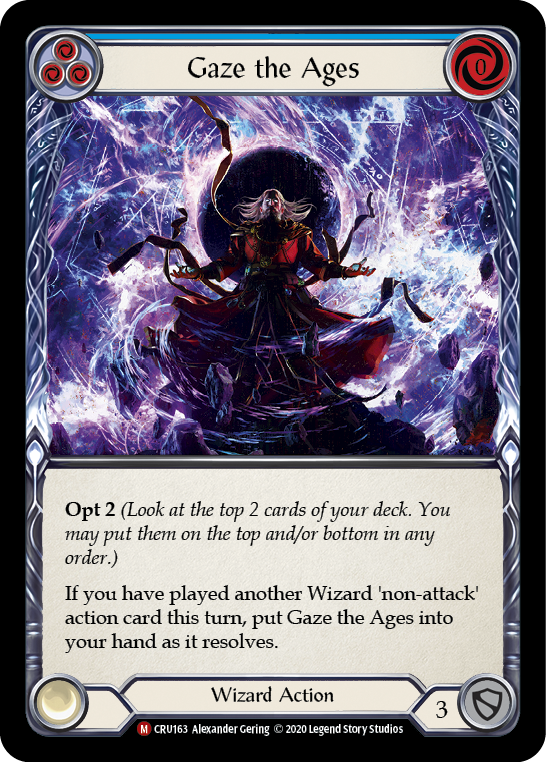
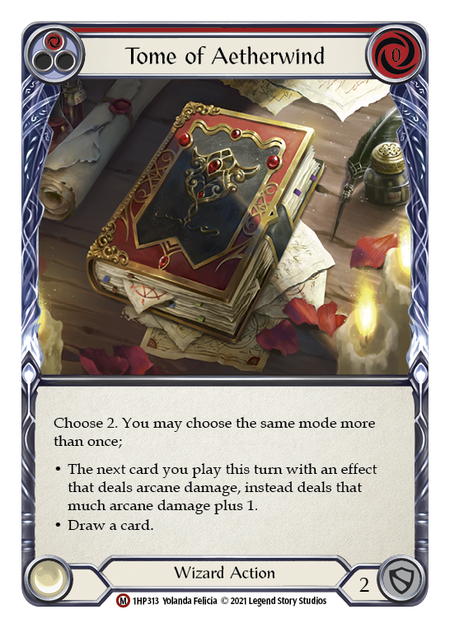

Buffer cards lend themselves well to learning good habits. Whenever you pitch a Tome, make sure you pitch two blues beneath it until you start pitching combo pieces again. If you find yourself pitching two blues and a Gaze the Ages, make sure you order your Gaze before the other blues when you put your pitch on the bottom, so that they can be opted away later with the Gaze.
Additionally, take some time to think about how you’re pitching for your plays. If you are going to cast Sonic Boom with a Crucible of Aetherweave buff, and have a Tome of Fyendal and a blue card in your hand, pitch the Tome first to Crucible, then pay for the Boom with your blue. This is slightly inefficient, but will make sure you have at least one blue card beneath that Tome for when you see it again.
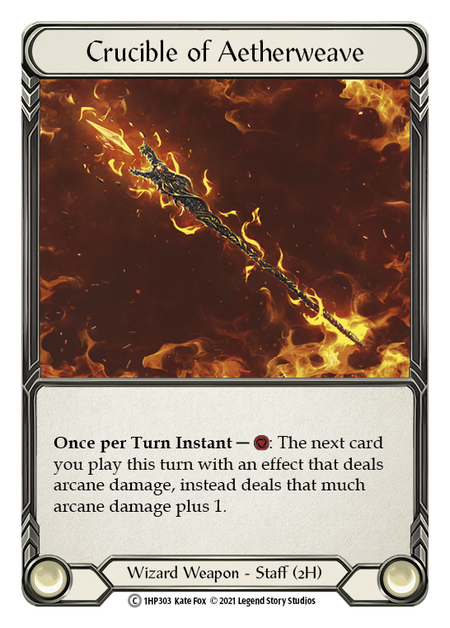

Good pitch habits can take a huge load off your memory. If you lose track of your pitch during a game, but you made sure to maintain good habits, oftentimes you can just blind pitch to Kano once you’re at your second cycle and your stack will work itself out as if by magic. Making sure you’re comfortable with remembering your marker sequence is especially important if you forget your exact stack, as it will tell you when you can start to blindly flip. Make sure you practice these habits when you can, even in fast games. Get used to ordering your pitch properly every turn and it’ll save you when you really need it.
4. Card Counting
Something you might have noticed using marker cards is that you can’t actually tell when you’re at your second cycle until you see them. This can lead to problems when your second cycle catches you off guard, or if your opening hand doesn’t include any blues or singletons you can use for your marker sequence. For example, what if your first hand of the game is Tome of Aetherwind, Eye of Ophidia, Blazing Aether, and Aether Wildfire? For a hand like this, you’d really love to pitch the whole thing. Eye of Ophidia is a good marker card, but chances are you will draw the rest of your combo pieces alongside your Eye - effectively a brick hand.
This is where card counting comes in. By counting how many cards are left in your first cycle deck, you can tell exactly when you’ll see your second cycle. Finally, we can play with perfect information.
Starting from the first turn of the game, when you draw your first hand, keep a running count of the cards you’ve seen. This number always starts at 4 (your first hand), and increments by 1 any time you draw a card, opt a card to the bottom of your deck, or banish a card with Kano’s hero power. If you have to shuffle your deck, count the cards in your hand, graveyard, banished zone, and in the arena, then reset your count to the number of cards outside your deck.


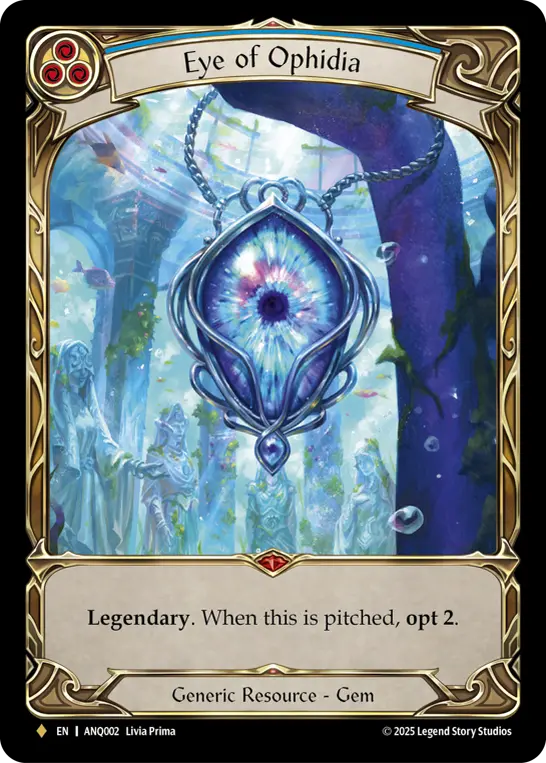

Using the example from before, your opening hand is Eye of Ophidia, Tome of Aetherwind, Aether Wildfire, and Blazing Aether. In order to pitch everything, pitch Eye of Ophidia first to activate Kano’s ability. Let’s say the Eye sees 1 blue card and a red Aether Spindle off the top, opt the blue card to the bottom and banish Aether Spindle. Use your remaining 3 red cards to activate Crucible of Aetherweave and play Aether Spindle for 5 damage. Assuming Spindle does 2 damage through Arcane Barrier 3, you opt 2 more blue cards from the top of your deck to the bottom. At the end of your turn, you place Eye of Ophidia on the bottom of your deck, followed by Aether Wildfire, Blazing Aether, and Tome of Aetherwind.
You could still keep track of your marker sequence of blues here, but it’s easier to learn to count cards in the long run. Going through that turn keeping card counting in mind, here’s how you would count it. The count will be indicated by the number in brackets.
Start of the game, you draw 4 cards (4).
You pitch Eye to Kano and opt 1 card to the bottom (5).
You banish red Aether Spindle (6).
You hit for 2 off of Spindle and opt 2 cards to bottom (8).
Finally you put your pitch on the bottom of the deck, and end your turn without putting a card into your arsenal.
You draw 4 new cards (12).
By the end, your pitch stack mnemonic should sound something like this:
12, 4, Fire, Blaze, Tome
12 (How many cards deep you are through your first cycle deck), 4 (your three blue cards that you opted to the bottom, plus the Eye of Ophidia), Fire, Blaze, Tome
Once you make it to 60, you know that your next hand will be all blues, and that your combo is coming right after. Keeping track of your count will be hard - just like memorizing your initial pitch stack was. It will take time before you can keep this count accurate alongside your pitch stack, let alone alongside navigating a game. If worst comes to worst and you forget your card count, you can still rely on a marker sequence to help bail you out. This is why you practiced that first.
Once you’re comfortable with counting, you’ll know exactly when your combo is coming. You can plan to strip cards from your opponent’s hand before you draw into it, or resolve an Imperial Edict right before your kill turn. You’ll know exactly how many resources you need before you even resolve your first banish. You’ll be able to map out a winning line through hoser cards like Oasis Respite or Sand Cover. Most importantly, you’ll be able to announce every card that comes off the top of your deck before you actually banish it, letting your opponent know exactly how they’re going to die, and making you sound like a smug bastard while you do it. Kano would be proud.
5. Common Mistakes
The most common and costly mistake is forgetting your stack. The best way to avoid this is diligent practice. If you forget a turn cycle, count the cards in your graveyard to help backtrack your turns, your count, and your pitch stack. While not foolproof, combined with a good marker sequence and good habits, it will at least give you a good estimate of how far through your deck you are.


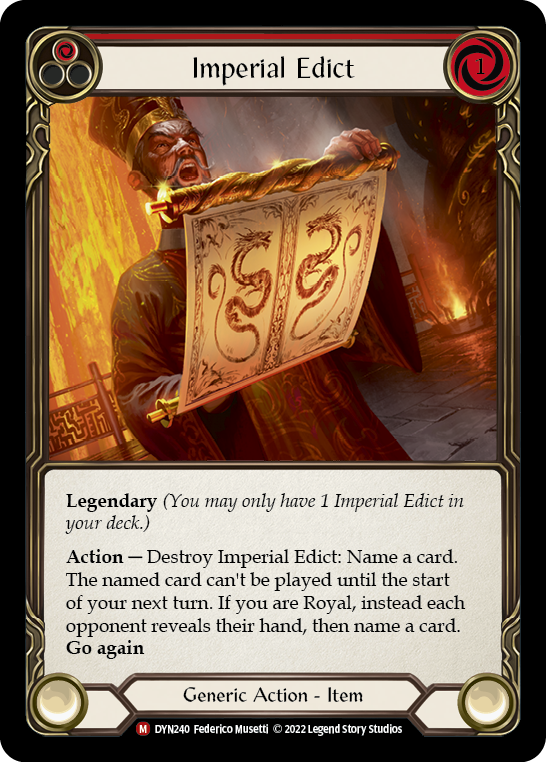
Bricking yourself is always a threat. Bricks are any cards that don’t advance your win condition. Non-attack actions like potions or Imperial Edict are bricks, since they cost you 3 resources and are banished while not contributing any damage to your combo. However, the worst brick is Eye of Ophidia, a resource card that cannot be banished whatsoever. Forgetting that you’ve pitched a brick without any way to remove it from your stack can turn a sure win into a devastating loss.
Imagine you pitch Eye of Ophidia and opt two blue cards beneath a Tome already on the bottom of your deck. When you pass your turn, your pitch stack will become Tome 2 Eye, cutting off access to any cards beneath the Eye. Be extra aware of turns where you pitch brick cards, and plan ways to remove them from your pitch stack using your buffer cards.
It’s important to note that Ragamuffin’s Hat is a buffer card. Since you aren’t usually swapping a card from hand when combo-ing from your pitch stack, you can use your Ragamuffin’s Hat to draw and bottom away any one bad card in your stack. Eye of Ophidia is a buffer card as well, but only if you can draw into it. You can do this with a pitch stacked Tome, with Ragamuffin’s Hat, or by drawing into it naturally before your combo turn.

Bottom deck disruptors are any effects that influence the bottom cards of your deck. Cards like fused Oaken Old, Coronet Peak, Disable, and Winter’s Bite are good examples, but any arcane damage you wish to avoid by pitching to arcane barrier can also disrupt your pitch stack.
If you’ve been diligent with your pitching habits, you’ll be able to identify when and what you should pitch to ensure that these effects won’t be detrimental to the quality of your pitch stack. Against arcane damage matchups - like Kano and Iyslander - incorporate your opponent’s arcane damage into your plan for how you’re going to pitch each turn cycle. Against bottom-of-deck disruption from Guardians, block their disruptive crush effects, or play to maintain tempo and prevent them from throwing their disruption at you in the first place. If you face a Disable, evaluate whether or not the card in your arsenal will brick your stack or not. Chances are the card will be a Tome of Fyendal, and if you have a sufficient life buffer, you can let that go to the bottom without any issues.

The Ur-matchup for honing pitch stacking, Arakni, Huntsman’s hero power amalgamates every common mistake you can make into one shifty contract killer. Their ability lets them bottom the top card of your deck whenever they play a contract card. This in turn disrupts the quality of your stack, can put bricks in bad places, and also mess with your card counting.
Track every unknown card that Arakni places on the bottom of your deck as a blue card (a number). Make sure you keep on top of your counting. Increment your count by one any time they bottom a card or banish a card. Always make sure you pitch cards like Gaze the Ages, and plan your stack around using Ragamuffin’s Hat to give yourself a buffer for their bottom deck disruption. These opt effects will potentially let you benefit from their hero power as they will let you see if Arakni sent a combo piece to the bottom of the deck for you.
Imperial Edict is a standout card in this matchup specifically, since it will greatly lessen the impact of their stack disruption by preventing them from playing Oasis Respite. Once you’re comfortable with this matchup, you can turn their disruption on its head by using their cards like Eradicate to accelerate your second cycle.
6. Help! Something Went Wrong!
Not every game is going to go perfectly. Pitch stacking with Kano is necessarily dependent on seeing good cards early in your first cycle. If you aren’t lucky enough to draw your combo pieces in the early game, you can’t pitch them for the late game. In cases like this, you still have options depending on the kind and quality of cards you see early on.
If you see too many blue hands early on...
...block with them. Otherwise, pitch those blues to Kano, looking to find red cards off the top on your turn to maintain tempo. If you see Gaze the Ages in these early all blue hands, pitch it last the first time you see it to give yourself a buffer and a resource rich hand to draw into.
If your stack is too red...
...you might end up resource starved when your combo comes around. Set up as many Energy Potions as you can, and try to evaluate which cards are most important for your combo. You will inevitably pitch a stretch of blues beneath your reds, which can give you the resources you need by arsenal-ing a Tome of Aetherwind before your combo turn. If your stack contains a Lesson in Lava, you can also use the shuffle effect to fish for extra resources with Tome.
If your stack is good, but split up by blues...
...one of the best ways to play around this kind of clog is to arsenal a Tome of Aetherwind, red Cindering Foresight, or Gaze the Ages, with the plan to play that card with Storm Striders and clear or draw your clogged blues when you combo. Another option is to stack two combo turns sequentially. If the first is weak, you can abandon it and play for the second one. If you do this, make sure you can survive long enough to reach your second combo stack. Some games and some matchups will not give you the time to pivot like this.
7. Potion of Deja Vu
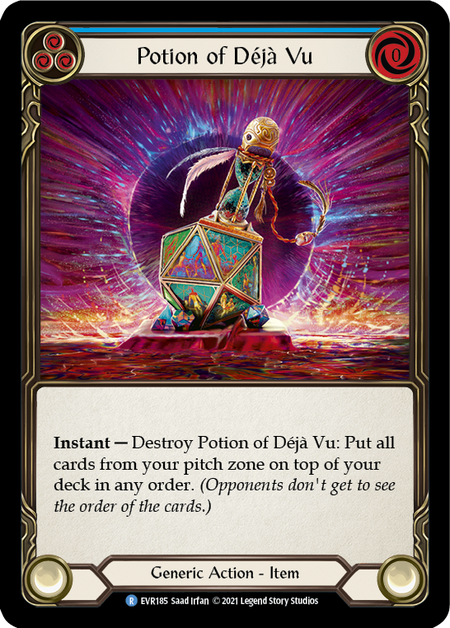
A fantastic way to fix mediocre or disrupted stacks is to play out a Potion of Deja Vu in the first cycle. D-pot is a super flexible card in Kano that frankly has too many applications to cover without its own dedicated guide, but there are some scenarios that come up more often than others.
Overshooting Your Stack
If you under-count your stack and end up drawing into one or more combo pieces, pitch them to Kano’s ability, then use D-Pot to put them back on top of the deck in response. You’ll still be missing resources compared to an all-blue hand, but your stacked combo will remain mostly the same. If you have more than one red combo piece in hand, Ragamuffin’s Hat can help you recoup the resource loss by swapping it with a blue in your pitch.
Fixing Bad Tomes
A Tome without blues underneath is generally dead. This can happen if you end up seeing too many red combo pieces after stacking a Tome. So long as you pitch stacked a hand of blue cards before your combo, you can use D-Pot in response to your Tome to draw into those resources again. This works especially well if your initial hand contains Gaze the Ages or Eye of Ophidia, since it can then clear any excess blues that you might be forced to put on top of the deck.
Two Combos, the Scuffed Way
There are two ways to go about this. Both are based on using the same blue cards to play two different combos.
The first is to present a large turn in your main phase with an all-blue hand to strip your opponent’s resources before your pitch stacked combo. Pitch all your blues to Kano to pay for your banishes and your spells, then before you end your turn, activate Potion of Deja Vu to put those blues back on top of your deck, ready to play the rest of your combo.
The other way is to present two separate combo turns back to back, when you don’t have the resources necessary to play everything in your stack. Fire off that first combo on their turn, then D-Pot and put your blues back on top to do it again the next.
8. Different Strokes
While I believe that anyone can learn my method, it might not be the best method for you. I spoke to fellow Kano player Jujubeans#5413 on discord about his own method, based on memory champion Dominic O’Brien’s mind palace.
To start, you imagine a location with distinct rooms, like your own house. Then, you pick a logical order to traverse these rooms, like visiting the washroom to brush your teeth after eating in the dining room. It helps to personify your cards – turn them into distinct characters so that you can use them to populate the different rooms in your mind palace. When you pitch chunks of cards, put them into each room in the order you chose before; then in order to recall your pitch stack, simply imagine yourself walking through your mind palace. The people you meet in each room are the cards you have stacked.
This method sounds weird, but it has a few advantages compared to my own. Namely, you don’t have to remember a running count to track your progress through your deck. You need only count the cards in each room, as well as the cards on board and in your graveyard, to determine how many cards you’ve seen. This method also naturally lets you memorize every card that you pitch. I would encourage you to try both methods and find the one that works best for you.
In Conclusion
If you’ve made it to the end of the guide, congratulations!
My hope is that this guide gives you the tools to finally learn this weird but invaluable skill. While everything in this guide can be practiced by goldfishing, it won’t prepare you for the decision overload you’ll face playing a real game. Sometimes you’ll want to leak damage to avoid pitching a blue to arcane barrier, knowing it will clog your stack. Sometimes you’ll be forced to block out with your combo pieces. Sometimes you just won’t have time to reach that second cycle, and you will need to pivot. In short, nothing beats real practice. Get out there and jam some Flesh and Blood. And remember, don’t cheat unless you're allowed to!




